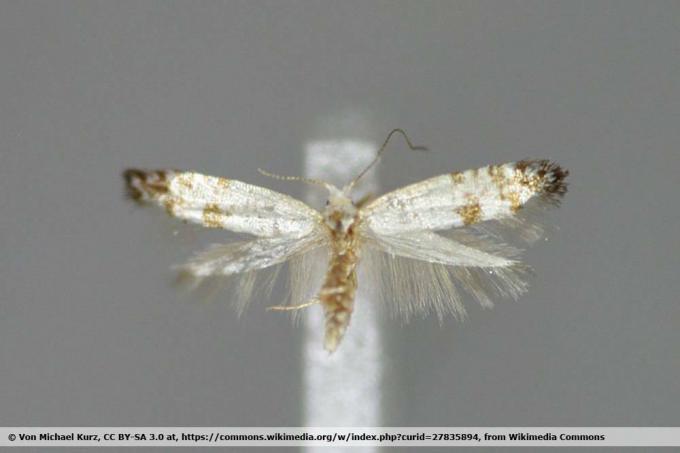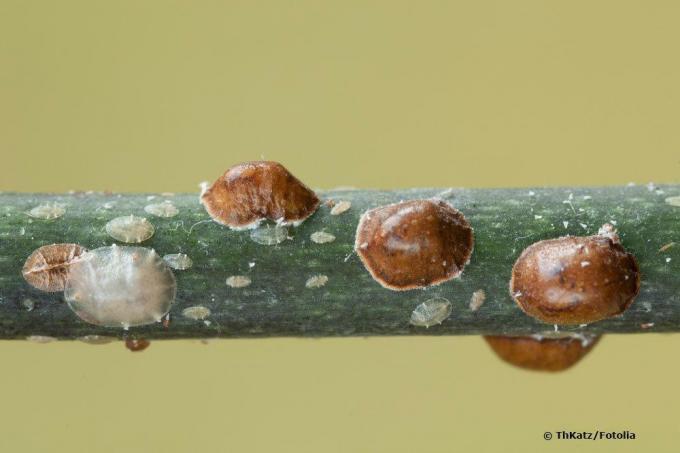
table of contents
- Pests on thuja hedges
- Thuja leaf miner
- Juniper leaf miner
- Bark beetle
- Scale insects
- Spider mites
Thuja or arborvitae, as the plant is also called, is one of the robust plants. Nevertheless, pests can cause considerable damage to thuja hedges and promote disease. It is therefore crucial to combat parasites early on. As a layperson, however, it is not always easy to identify the type of pest in question. We explain what to look out for and what can be done against a pest infestation.
Pests on thuja hedges
An infestation with pests is rather rare in the tree of life. If there is damage to hedges or solitary plants, only a few insects are considered. These include:
- Thuja leaf miner
- Juniper leaf miner
- Bark beetle
- Scale insects
- Spider mites
Thuja leaf miner
The moths are difficult to distinguish. However, they do not cause any damage to the plants, they just lay their eggs on them. When the larvae hatch, they feed on the leaves and shoots. The adult leaf miners fly between June and July. The larvae can hatch between August and September but also in the following year. An infestation can be determined at the following points:
- Leaves and shoots that first become transparent and then brown and die off
- black spots from fecal deposits
- brown caterpillars
- Feeding channels in the leaves and on the shoots

Juniper leaf miner
The juniper leaf miner can also get lost on the thuja and can be recognized by the points mentioned above. Only the flight time of the insects differs. They are already active from May. Accordingly, the damage can occur earlier in the year. In terms of damage and control, however, it does not differ from the thuja leaf miner.

Fight leaf miners
If the described damage is found on hedges or individual trees of life, the overall condition of the plants should first be checked. In the case of otherwise healthy and vigorous plants, it is usually sufficient to simply cut off the infected shoots and dispose of them. However, you shouldn't end up on the compost as the pests could spread again from here.
In the case of already weakened plants or a strong infestation, control must be carried out in two ways. On the one hand, a strong pruning must be carried out in order to remove as many of the caterpillars and other eggs as well as the already damaged parts of the plant. In addition, an appropriate pest control agent from a specialist retailer must be used.
Bark beetle
Another thuja pest is the bark beetle. It only attacks thuja when they are already weakened and suffering from drought. Therefore, hedges should also be watered regularly and abundantly if necessary and especially shortly after planting. The adult beetles bore their way into the bark and lay their eggs here, similar to the leaf miners. The consequences are among others:
- dead shoots
- visible larvae on the leaves
- Drilled holes and discoloration on the bark of the branches
- Feed marks on the leaves
The large, brown bark beetles or their larvae can cause considerable damage to the tree of life and destroy entire hedges.

Fight bark beetles
Due to the great potential for damage, immediate action should be taken in the event of an infestation with bark beetle larvae. Similar to the fight against leaf miners, affected parts must be removed and destroyed. In addition, an appropriate pesticide should be used to kill any remaining eggs and larvae.
It is also important to strengthen the tree of life and water it sufficiently to prevent further infestation.
Scale insects
Scale insects rarely appear on thuja hedges and, in comparison, cause little damage. The small pests are visible to the naked eye and are often found on the underside of the leaves of thuja hedges. They also cause feeding marks.
On the one hand, appropriate pesticides can be used to combat it. On the other hand, however, natural predators can also be used. These include:
- Ladybug
- Lacewing
- Parasitic wasps
- Hoverflies
- Predatory beetle

Extra tip: The beneficial insects or predators should be bought early in specialist shops or online, as they are usually available as eggs or larvae and therefore need sufficient time to fight the parasites can.
Spider mites
Spider mite infestation manifests itself as white webs between the leaves of the thuja. The pests mainly occur on thuja hedges when the plants are warm and dry. A good means of prevention is therefore again to sufficiently water hedges and individual plants. In addition, they can occasionally be sprayed with water, because moisture is not good for the spider mites.

If an infestation has already occurred, the affected parts of the plant can be cut off and destroyed. If possible, they should be incinerated or disposed of with household waste to prevent the parasites from spreading again. In addition, various plant broths can be used to spray the trees of life. Including:
- Tansy
- Wormwood
- Field horsetail
Alternatively, ready-made products for spraying plants against thuja pests can be purchased from specialist retailers. Products with neem oil, for example, are well suited.



